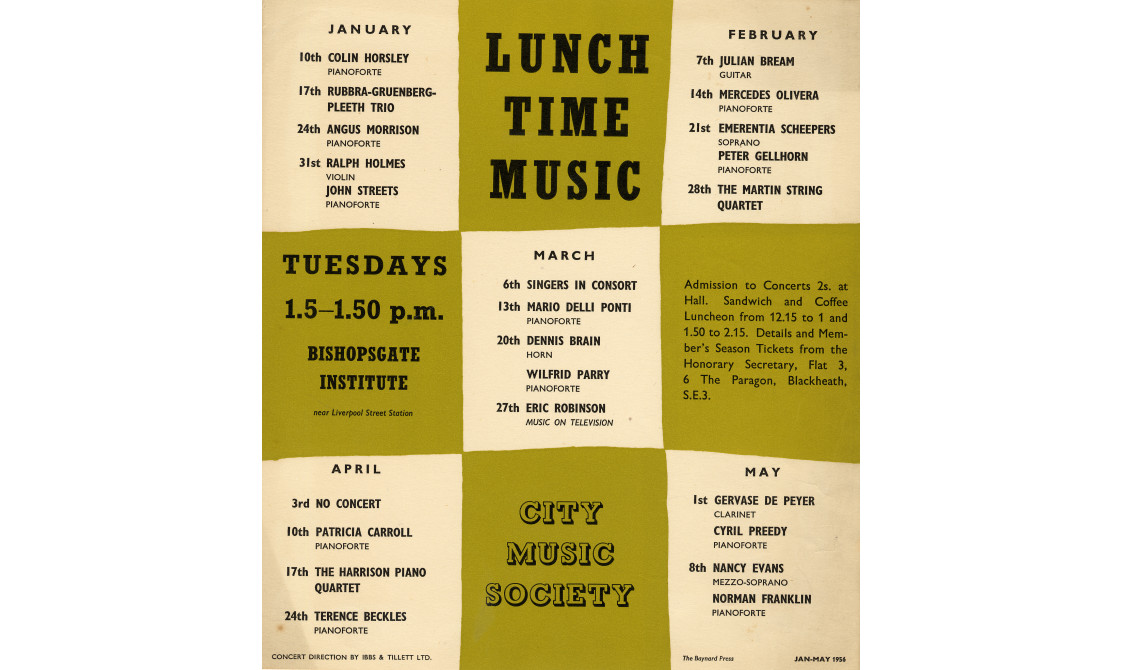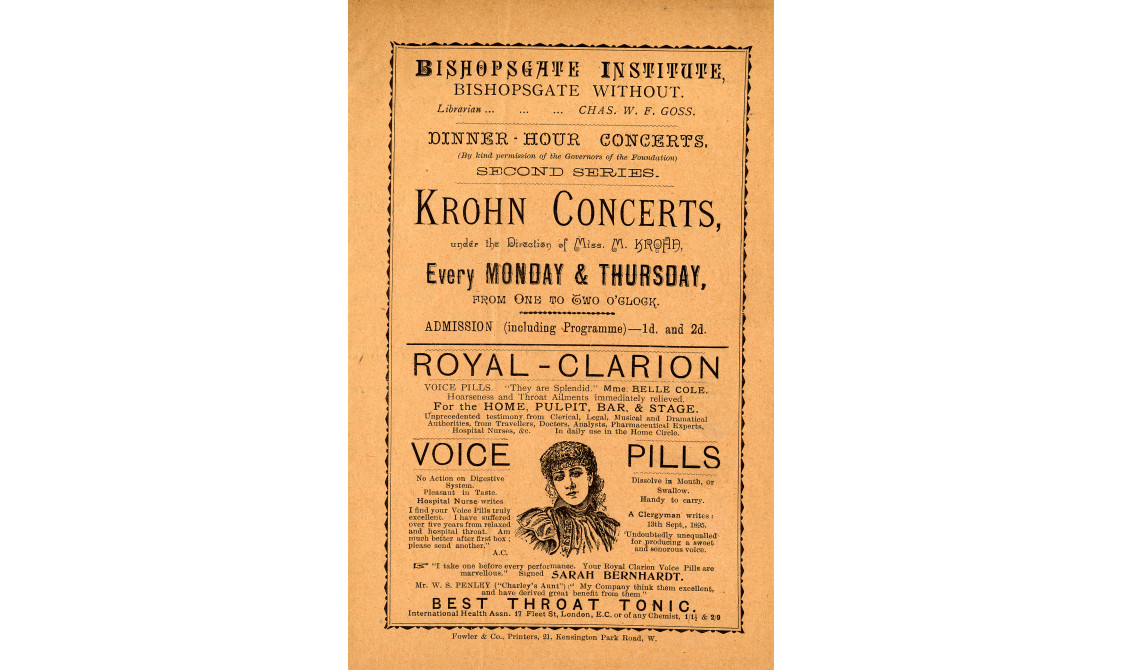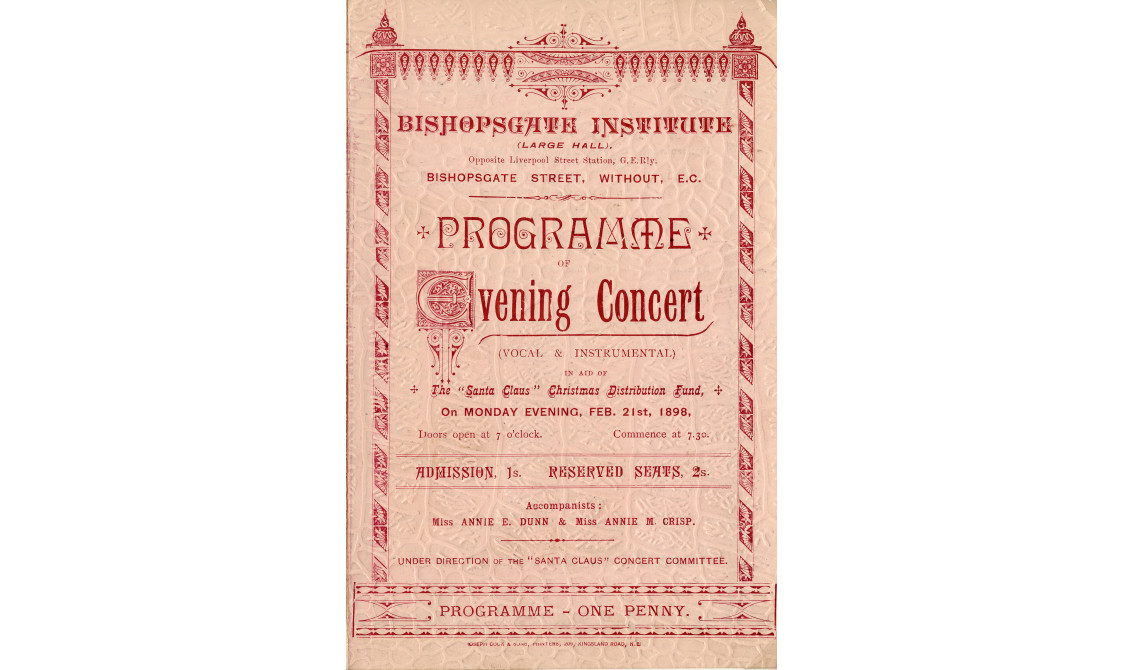Article: Lunchtime concerts - A story of wartime unity
News Story

Music and performance have long been at the heart of Bishopsgate Institute's public programme, with our lunchtime concerts running throughout the twentieth century.

During the Second World War, London went through a "cultural black-out", with theatres, museums, galleries, and concert halls closing. Seeing the arts as being vital in boosting morale, pianist Myra Hess paid a visit to Kenneth Clark, the Director of the National Gallery, to see how they could uplift the arts scene once again. She asked Clark if she could turn the Gallery into a music hall, and he gladly accepted.
When the first concert came around on 10 October 1939, Hess had no idea if anyone would be interested in attending, but when the doors opened to the public at 12:30, they saw that the queue stretched around Trafalgar Square. She had been right – now people needed music more than ever. Hess played to an audience of around 1,000 visitors, with the lunchtime concerts becoming a regular fixture. Both her and Clark kept the events informal, with no advance booking, audiences being able to come and go as they wished, and also being able to eat their sandwiches as they watched the performances.
We adopted a similarly informal approach when we started hosting lunchtime concerts at Bishopsgate Institute.
Though we staged concerts right at the beginning of our founding, they were rebooted in 1948 when we got involved with the City Music Society, who were inspired by the work of Myra Hess.

We worked with the City Music Society until 2016, with our lunchtime concerts now exploring how they connect to our collections. These concerts still also uphold the original principles of free admission, audiences able to eat lunch as they listen, and a celebration of the power of music. Often these concerts respond to themes from our special collections and include a display of original historical materials.

We also have a close connection to the original Myra Hess lunchtime concerts as we’re home to her piano, a beautiful 1927 Rosewood Steinway Model D Grand piano. The City Music Society bought the piano from the estate of Myra Hess in late 1965, and it came here to Bishopsgate Institute.
We then bought the piano from the City Music Society in 1994, meaning the piano has been with us for most of her life. We also undertook a full renovation and repair of the piano in 2017.
You may have heard the Bishopsgate Institute Team refer to the piano itself as Myra; this is because she's previously been the focal point of our My Myra series, where individual musicians perform, inspired by their own experience of the piano.
At a time where we’re looking for music to inspire us once more, we’re pleased to be bringing our lunchtime concerts back and bringing them online. These nine concerts will take in a range of musical genres, from the traditional to the unexpected. Over the course of the series, you will hear three different instruments presented in three different ways.
In our gallery below, you can also explore the history of both our concerts and the original lunchtime concerts through our special collections and archives.
Image gallery
A gallery slider

































What We Do
